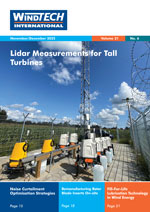A Constant Response to the Grid Code Jungle
With an ever greater share of electricity produced by wind power, the behaviour of wind turbines during grid faults is of critical importance. An increasing number of international grid code specifications require wind turbines to be able to ride through all types of grid faults. Fault ride-through capabilities have come as a result of the large increase in installed wind capacity that feeds into transmission systems, making it necessary for wind generation to stay operational in the event of a network fault. The ultimate objective is to have a wind turbine behave like a conventional power plant. In this article, Lasse Kankainen from The Switch discusses grid codes and fault ride-through requirements in general, and the testing of the company’s full-power converter (FPC) technology.
By Lasse Kankainen, R&D Engineer, The Switch, Finland
With an ever greater share of electricity produced by wind power, the behaviour of wind turbines during grid faults is of critical importance. An increasing number of international grid code specifications require wind turbines to be able to ride through all types of grid faults. Fault ride-through capabilities have come as a result of the large increase in installed wind capacity that feeds into transmission systems, making it necessary for wind generation to stay operational in the event of a network fault. The ultimate objective is to have a wind turbine behave like a conventional power plant. In this article, Lasse Kankainen from The Switch discusses grid codes and fault ride-through requirements in general, and the testing of the company’s full-power converter (FPC) technology.
By Lasse Kankainen, R&D Engineer, The Switch, Finland










